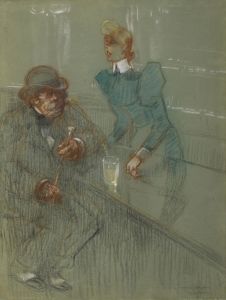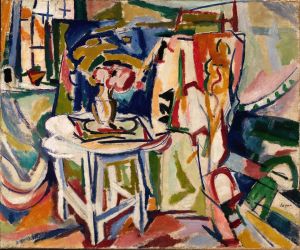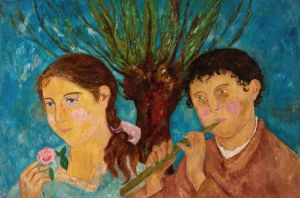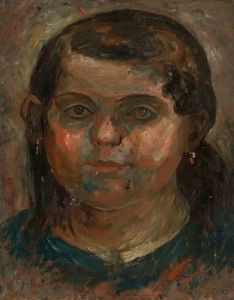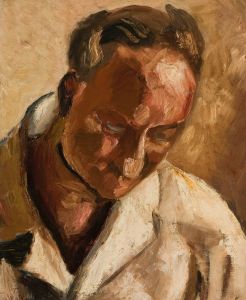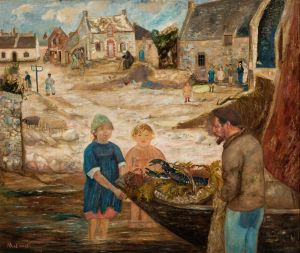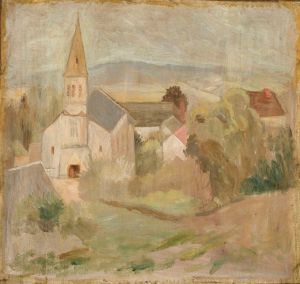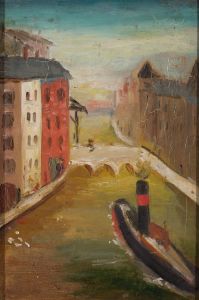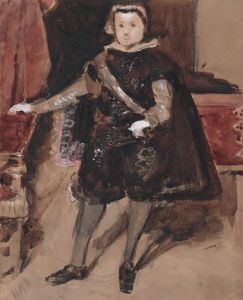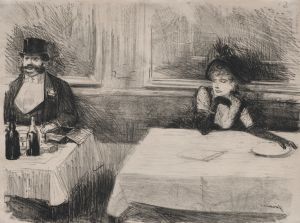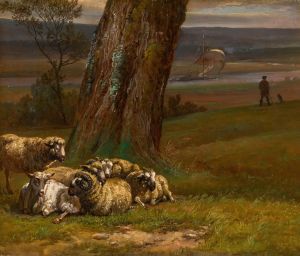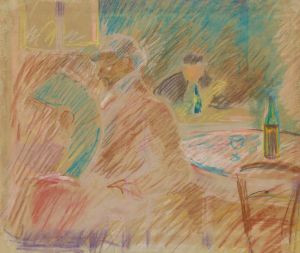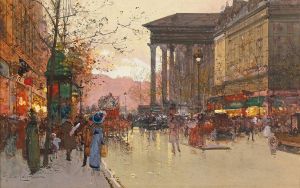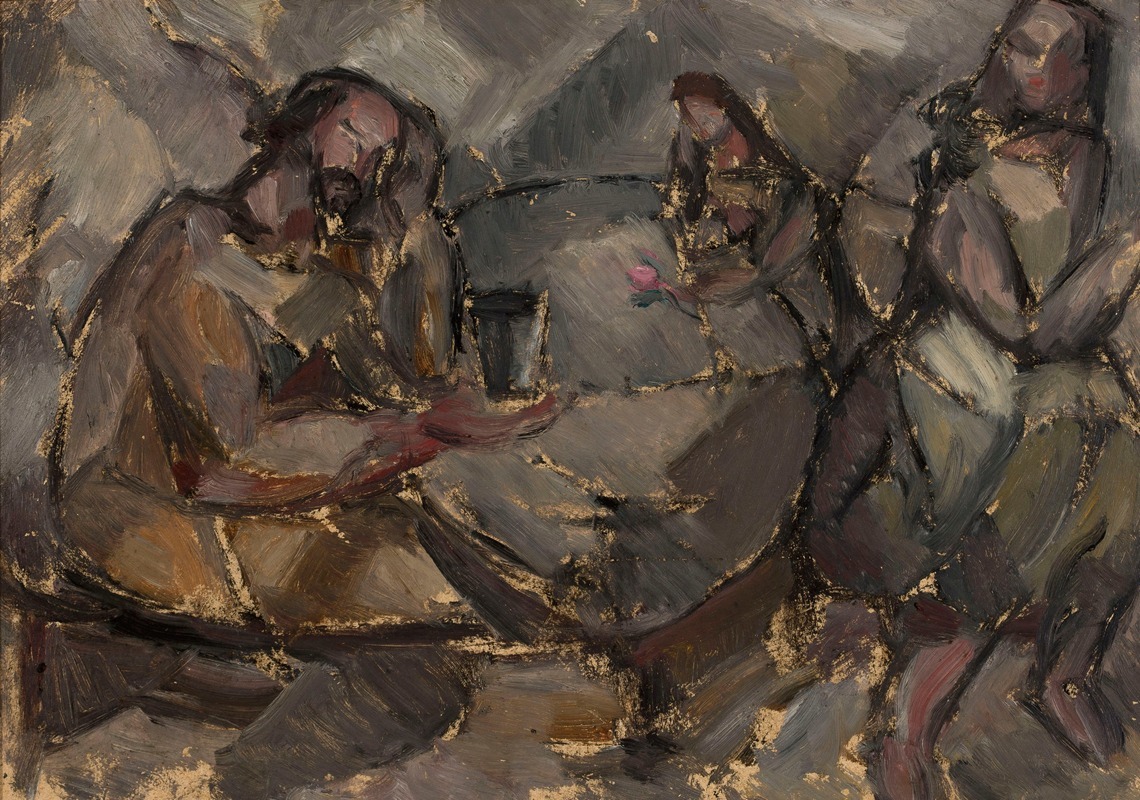
In a wine bar
A hand-painted replica of Tadeusz Makowski’s masterpiece In a wine bar, meticulously crafted by professional artists to capture the true essence of the original. Each piece is created with museum-quality canvas and rare mineral pigments, carefully painted by experienced artists with delicate brushstrokes and rich, layered colors to perfectly recreate the texture of the original artwork. Unlike machine-printed reproductions, this hand-painted version brings the painting to life, infused with the artist’s emotions and skill in every stroke. Whether for personal collection or home decoration, it instantly elevates the artistic atmosphere of any space.
Tadeusz Makowski was a Polish painter known for his unique style that combined elements of folk art, symbolism, and modernism. Born on January 29, 1882, in Oświęcim, Poland, Makowski initially studied classical philology at the Jagiellonian University in Kraków before turning to art. He later attended the Academy of Fine Arts in Kraków, where he studied under prominent artists such as Józef Mehoffer and Jan Stanisławski. Makowski's early work was influenced by the Young Poland movement, which sought to bring modernist ideas to Polish art.
Makowski moved to Paris in 1908, where he became part of the vibrant artistic community that included figures like Pablo Picasso and Georges Braque. His exposure to Cubism and other avant-garde movements significantly influenced his artistic development. However, Makowski maintained a distinctive style that often featured simplified forms and a focus on everyday subjects, infused with a sense of nostalgia and whimsy.
"In a Wine Bar" is one of Makowski's notable works, though specific details about the painting, such as its creation date and current location, are not widely documented. The painting reflects Makowski's characteristic style, which often included depictions of scenes from everyday life, rendered with a sense of charm and simplicity. His works frequently featured figures with exaggerated, almost childlike proportions, set against backgrounds that emphasized geometric shapes and muted colors.
Makowski's paintings often evoke a sense of innocence and naivety, drawing inspiration from children's art and folk traditions. This approach is evident in "In a Wine Bar," where the figures and setting are likely portrayed with a playful yet introspective quality. The painting captures a moment of social interaction, a theme common in Makowski's work, where he explored the dynamics of human relationships and the environments they inhabit.
Throughout his career, Makowski remained somewhat on the periphery of mainstream art movements, choosing instead to develop his unique voice. His work is characterized by a blend of modernist techniques and a deep appreciation for the simplicity and directness of folk art. This combination allowed Makowski to create works that were both innovative and deeply rooted in cultural traditions.
Tadeusz Makowski passed away on November 1, 1932, in Paris, leaving behind a body of work that continues to be celebrated for its originality and emotional depth. His paintings are held in various collections, including the National Museum in Warsaw and the Musée National d'Art Moderne in Paris. Makowski's legacy is that of an artist who successfully bridged the gap between modernism and tradition, creating art that resonates with both historical significance and timeless appeal.





